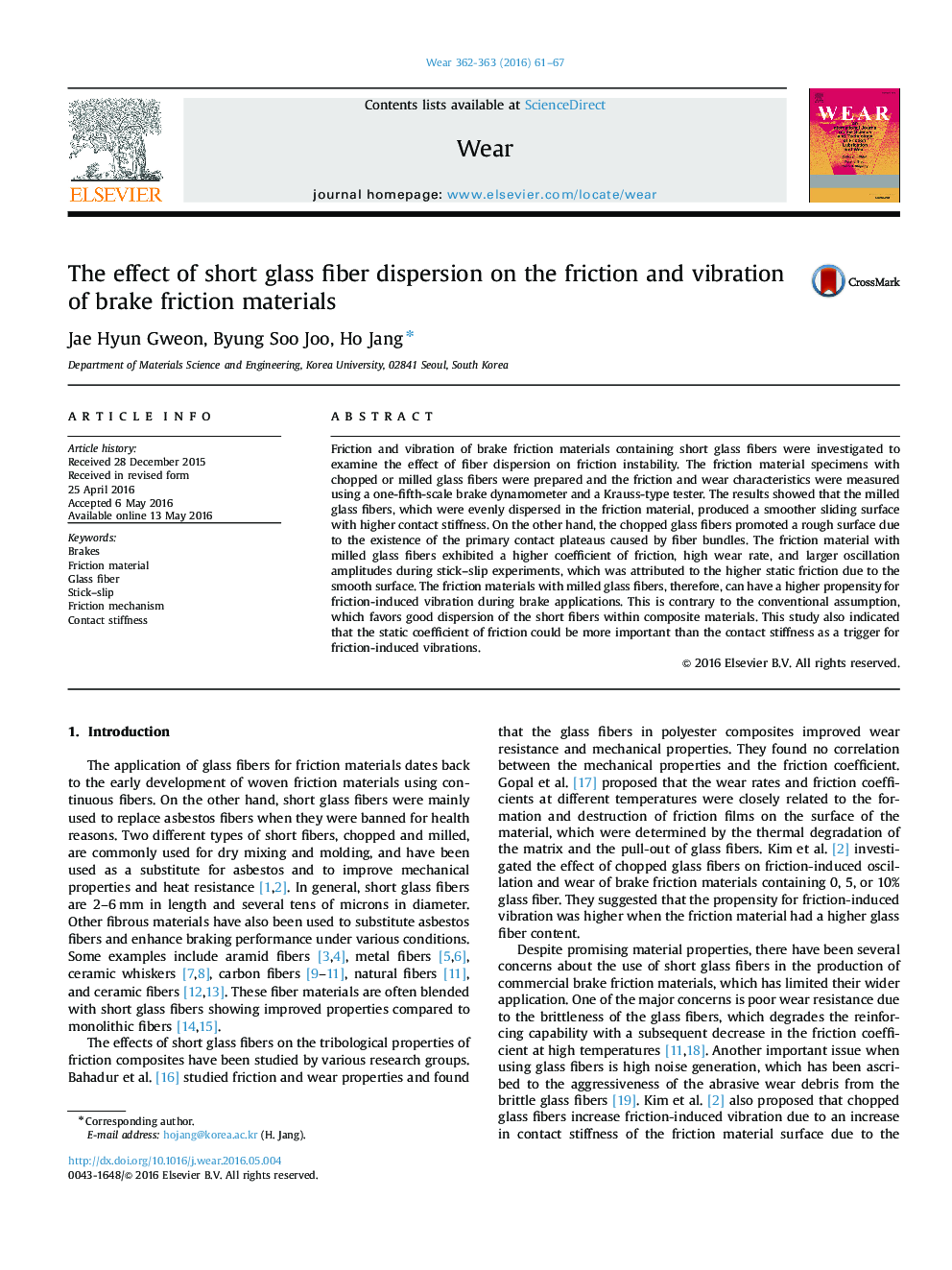| Article ID | Journal | Published Year | Pages | File Type |
|---|---|---|---|---|
| 616855 | Wear | 2016 | 7 Pages |
Abstract
Friction and vibration of brake friction materials containing short glass fibers were investigated to examine the effect of fiber dispersion on friction instability. The friction material specimens with chopped or milled glass fibers were prepared and the friction and wear characteristics were measured using a one-fifth-scale brake dynamometer and a Krauss-type tester. The results showed that the milled glass fibers, which were evenly dispersed in the friction material, produced a smoother sliding surface with higher contact stiffness. On the other hand, the chopped glass fibers promoted a rough surface due to the existence of the primary contact plateaus caused by fiber bundles. The friction material with milled glass fibers exhibited a higher coefficient of friction, high wear rate, and larger oscillation amplitudes during stick-slip experiments, which was attributed to the higher static friction due to the smooth surface. The friction materials with milled glass fibers, therefore, can have a higher propensity for friction-induced vibration during brake applications. This is contrary to the conventional assumption, which favors good dispersion of the short fibers within composite materials. This study also indicated that the static coefficient of friction could be more important than the contact stiffness as a trigger for friction-induced vibrations.
Related Topics
Physical Sciences and Engineering
Chemical Engineering
Colloid and Surface Chemistry
Authors
Jae Hyun Gweon, Byung Soo Joo, Ho Jang,
